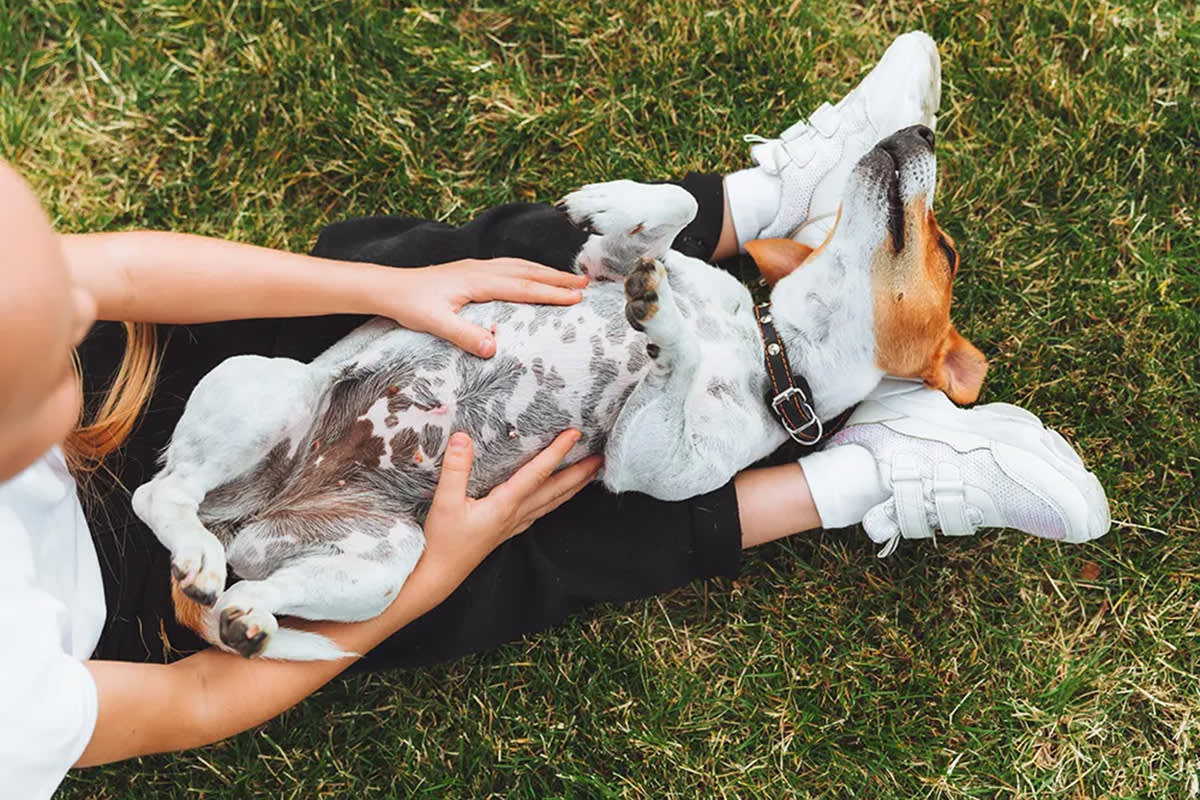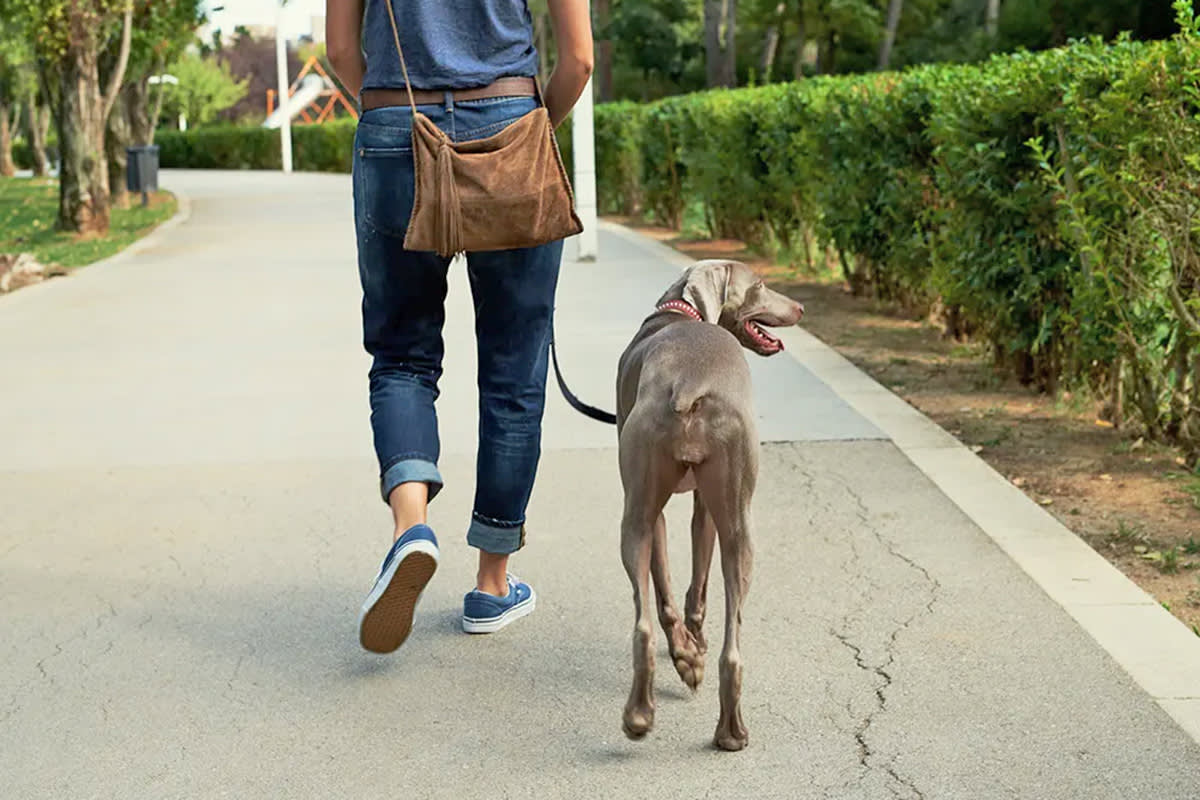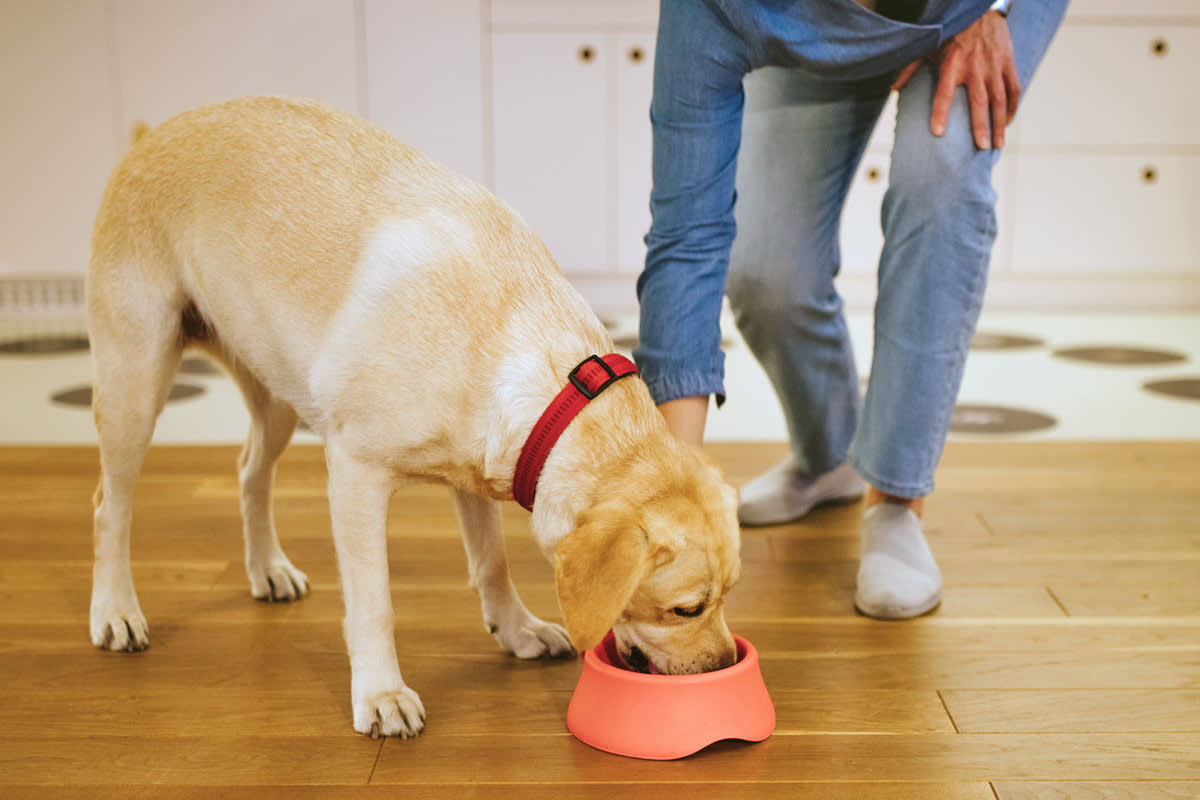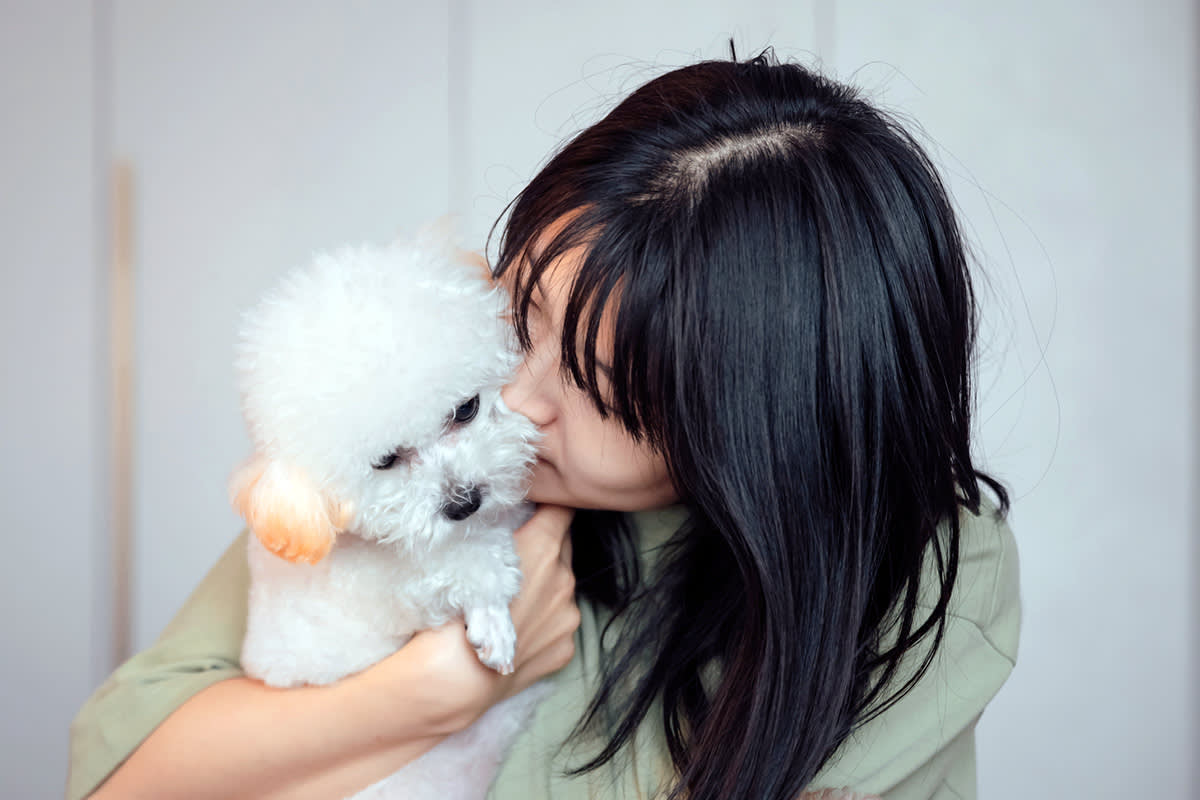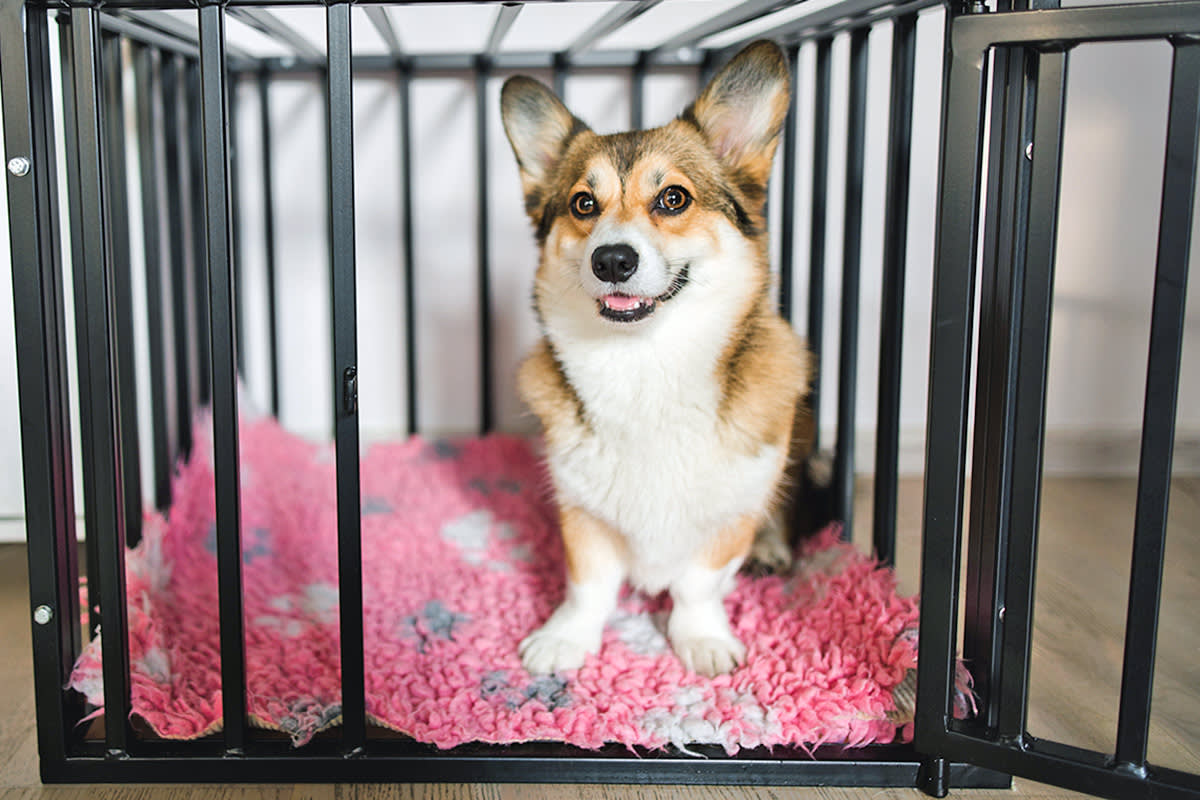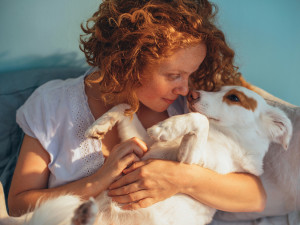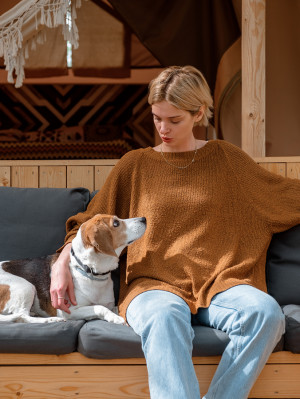11 Ways You’re Annoying Your Dog Without Realizing It
Things can rub dogs the wrong way, too.
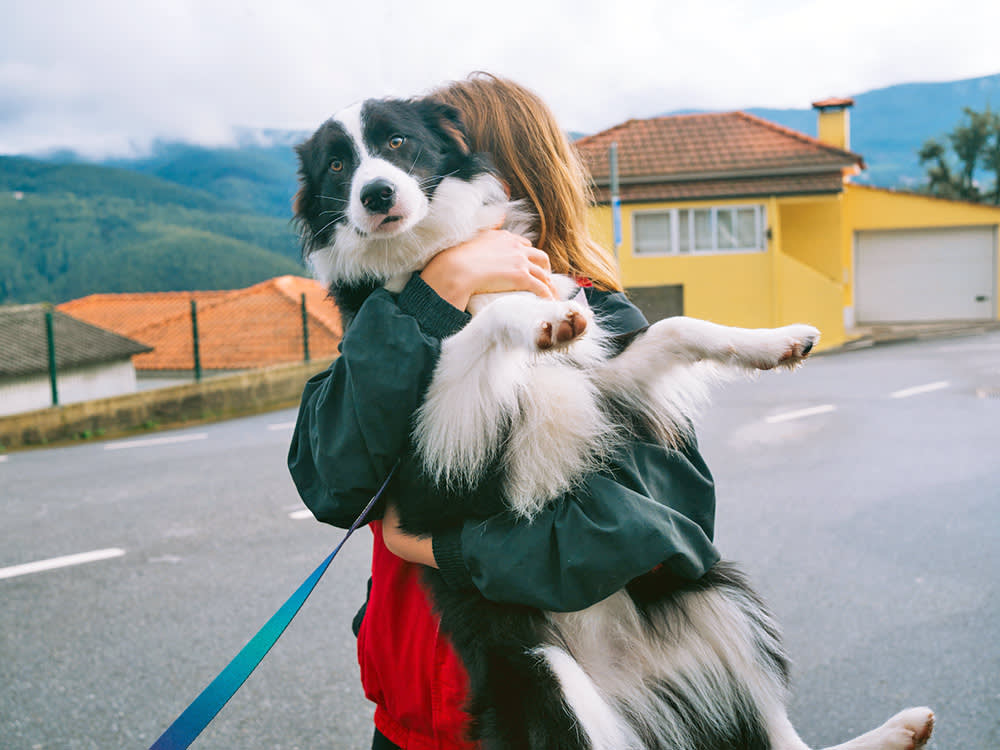
Share Article
As dog parents, we all have our pet peeves (pun intended). Some can’t stand excessive barkingopens in new tab. Others might cringe a little whenever our precious pooches lays a big, wet kiss on their cheeks. And don’t even get some folks started on their pups’ digging habits in the backyard. But what about our pets? Do they also have a list of peccadillos they can’t stand?
Of course they do! Like all sentient creatures, our dogs love certain human behaviors and loathe others. The question is which ones bother your specific dog.
To help get you started, we recruited two experts to help us compile a list of situations that breed frustration — veterinary psychiatrist Dr. Rachel Malamedopens in new tab; board-certified veterinary behaviorist Dr. Stefanie Schwartzopens in new tab, owner of Pet Behavior Medicineopens in new tab and founder of Civilized Petopens in new tab; and certified professional dog trainer Rob Adams, owner of FRONT DOG Training opens in new tab and designer of the FRONT Harness.
“It’s hard for us to know what dogs are thinking and feeling because they can’t tell us,” Schwartz says. “All we can do is make educated guesses about what we think they’re feeling based on their behavior.”

Interrupting their sleep
You know those moments when you look over and your dog is shaking, twitching, and chirping? Don’t wake them upopens in new tab. Just like you hate it when someone comes between you and your REM cycle, so does your dog. As intense as those sleepy-time behaviors might look, they’re perfectly normal 99.9 percent of the time.
Generally, Schwartz says, it’s best not to project onto our dogs and assume that they will react to things the way we do. At the same time, there is some common ground to be found, and this is one example. “When my kids woke me up on Sunday morning at 5 a.m. I wasn’t all that grateful,” she says. Your dog wouldn’t be, either.
Practicing “exposure therapy”
When your dog is afraid of something, it can be tempting to use the “sink or swim” method. But just like those stereotypical boomer parents who threw their kids into the family pool, dog parents who do this often set their beloved pals up for further trauma.
Repeatedly exposing dogs to situations that have sparked fearful or aggressive reactions in the past is not ideal, Malamed says. “Often, this worsens their fear, anxiety or stress.” Instead, she recommends a more gradual and systematic approach; build up exposure gradually to avoid a fearful response.
Ultimately, repeated and forced exposure to frightening stimuli can diminish trust, increase your dog’s fear, and even increase the risk that your dog will react aggressively or bite. In fact, Malamed says, “I have had numerous clients come to see me after suffering bites as a direct effect of using punitive and confrontational techniques that caused their dog’s issues to worsen.”
Ending walks early
We’re all busy, but for many dogs, especially city dwellers, walks are a crucial enrichment time — their only chance to explore and engage with the outside world. Unless your dog has specific anxieties around going outside, chances are they hate it when you spend the entire walk rushing them along.
“Walks are a huge deal,” Schwartz says. To your dog, this is a territorial patrol of the neighborhood — a form of exercise and intellectual stimulation and also a bonding opportunity as their pack secures the perimeter. “So, if you deprive your dog of a walk or shorten it for your own reasons, then you're depriving the dog of some massively important benefits that affect their health and their mental health.”
The other thing about walks? They’re also good for your health. So, do both yourself and your dog a favor and see them through to the end.
Scolding them instead of modeling good behavior
A poorly trained dog hears the word “no” a l ot more than necessary — and more often than not, because of poorly trained humans. If you really want to exist harmoniously with your dog, it’s important to show them what you do want them to do instead of just telling them not to do something.
Dogs don’t discern between positive and negative attention, Adams says: “If the only attention they get is while they’re doing something you don’t want, you’re accidentally teaching them to do that.”
This is where training techniques, like redirection, can be key. For example, if your dog is barking, don’t just shout “no” and call it a day. Try to redirect their energy into checking in with you or playing with a toy. Then, provide occasional rewards when they exhibit the new behavior you want.
Bugging them during mealtime
Dogs only eat a couple times per day, and for many, this is a sacred moment. To let your dog fully savor their grub, avoid petting, prodding, or playing with them until they’ve scarfed it all down. And definitely don’t take the food away once it’s hit the ground.
Behaviors like those described above can “trigger an immediate response of displeasure,” Schwartz warns, “and some dogs can then have that pathway switched on and become very defensive of their food or toys or treats — whatever it is that we have taken away from them.”
Letting strangers approach without warning
Picture this: You’re sitting with friends in the park, and all of a sudden, a random interloper runs up to you, starts making weird noises at you, and reaches out to scratch your forehead. You try to back away, but instead of taking the hint, he comes closer while all of your friends stare and let it happen. If that doesn’t sound ideal to you, why let it happen to your dog?
“Humans tend to greet dogs head-on, reach to pet them, make direct eye contact, and immediately assume that they want to be pet,” Malamed says. But just like you probably wouldn’t appreciate this kind of greeting, neither does your dog. Instead, Malamed says, many dogs can find the experience “threatening.”
Short changing them during playtime
A lot of people tend to treat their dogs like objects in a room — unconscious things that are just kind of there. But as Adams puts it, “They’re not lamps.” They’re living, breathing, conscious beings, and if we don’t give them something interesting to do, they’ll spend most of their lives bored.
“They’re very social creatures,” Adams says. “Your dog doesn’t like it when you’re staring at your phone when they’re staring at you.”
Similarly, Schwartz says, another common faux pas is initiating play and then failing to follow through. “That’s kind of selfish, right?” she says. “So give your dog the time, make the time that they need, and don’t walk away until they’re done and happy.”
Coddling them
This one’s for those of us with small dogs. As tempting as it might be to treat your pint-sized pooch like something between an infant and a toy, you’re actually stifling their development. Dogs need to build confidence, and they do that by interacting with the world on their own — not by riding around in your purse or sitting on your lap 24/7.
Some pet parents skip training their smaller dogs, Adams notes, because they believe only big dogs need it. That couldn’t be further from the truth. He uses Chihuahuas’ stereotypical penchant for barking as an example: “Everyone thinks they’re always very yappy, and that’s because nobody trains them,” he says. “They don’t know what they're supposed to be doing, so they freak out.”
While some little dogs like being picked up and sitting on laps (as do some large dogs), every dog is different. Before you snatch a fluffy little dog into our arms, approach slowly and make sure they’re interested in interacting that way. Even if they do enjoy being held, make sure you give them enough opportunities to investigate their surroundings on their own.
“They never build up confidence if they aren’t allowed to do what is natural to them,” Adams says. “If you coddle a child, they don’t know how to be OK on their own.” Dogs are no different.
Ignoring their body language
Dogs can’t use their words to tell us when they’re upset, and too often, we ignore the many, many cues and vocalizations they use to communicate instead. If you want to understand better and avoid getting on their nerves in the future, you have to learn to read their signals.
“Look at the whole body and the big picture, as well as the subtle signs of canine body language,” Malamed says. “For example: ears back, lip-licking, yawning, tail down, moving away, avoiding eye contact can indicate fear, anxiety or stress.”
While many pet parents might complain about their dogs lashing out or becoming aggressive “out of nowhere,” as Adams put it, there actually tend to be a lot of warning signs. Per Adams, “Reading the dog’s body language is really important to understanding the dog.”
Forced crate-training
“To crate, or not to crate?” That is the question most dog parents will ask at some point or another. While some experts advise that crates can be a safe space for your pup (especially if you find the right one and train them early), Schwartz says this is not the case for all dogs. She adds that alternatives exist — for example, play pens and baby gates, which offer more space and may feel less confining to your particular dog.
“Dogs are very much individuals, and some of them do well and even like going into their crates just to hang out,” Schwartz says. “But the vast majority of dogs are not going to think it’s OK.”
Talking at them like people
As instinctual as it might feel to beg your dog not to pee on forbidden objects during a walk, you might as well be a mwop-mwop-mwop-ing adult in a Peanuts cartoon. “Dogs will pick up like 250 to 1000 words that we use,” Adams says. “But everything is action-based. It’s the association with the words that matters.”
If you spend too much time spewing meaningless sounds at your dog, Adams warns, they might start to tune you out. Instead, use body language to communicate your excitement and displeasure. Your dog (and pretty much every other animal in the world) will understand that a lot better.

Laura Bradley
Laura is a New York-based experienced writer and mom of two rescue pups. Her work has appeared in Slate, Vanity Fair, Daily Beast, The Washington Post, The Atlantic, Yahoo! News, Vulture, Grazia Magazine, and more. When she is not writing or walking the pooches, you will probably find her in the community garden.
Related articles
![Unrecognizable man sitting at desk petting his dog]()
How to Pet a Dog — Yes, You Do Need Lessons
There’s a difference between being affectionate and being annoying.
![A woman holding her dog close.]()
FYI, Your Dog Can’t Stand When You Do These 7 Things
Thanks, they hate it.
![Dog playing the shell game with her human. Concept of training pets, domestic dogs being smart and educated]()
4 Ways to Keep Your Dog Busy When They Can’t Exercise
Even if your dog is injured and can't exercise, you can still keep them entertained. Here's how.
![Woman sitting with her dog outdoors]()
How to Talk to Your Dog, According to Science
Baby talk works on puppies. As for adult dogs, that’s still up for debate.
![Short-haired blonde woman in a tan sweater and blue jeans sitting on a bench talking to her Beagle mix dog who is looking up at her]()
How You Say Something to Your Dog Matters More Than What You Say
TikTok pet parents have made this clear: Tone matters. Celebrity dog trainer Nicole Ellis says dogs can hear “stress in our voice — whether directed at them or when they hear us talking to others.”
